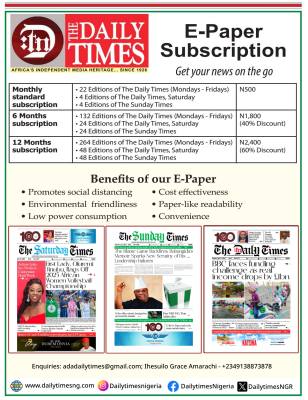World Bank forecasts dark prospect for global economies in 2019

…Cuts growth to 2.9 percent, Nigeria to grow by 2.2 percent
…Advises developing economies to build buffers, productivity
Mathew Dadiya, Abuja
The World Bank has said that global economic growth is projected to soften from a downwardly revised 3 percent in 2018 to 2.9 percent in 2019 amid rising downside risks to the outlook, urging that emerging and developing economies should rebuild policy buffers and boost productivity to sustain growth.
The bank, in its January 2019 Global Economic Prospects released on Tuesday, said that international trade and manufacturing activity have softened, trade tensions remain elevated, and some large emerging markets have experienced substantial financial market pressures.
World Bank Chief Executive Officer, Kristalina Georgieva, observed that at the beginning of 2018, the global economy was firing on all cylinders, but it lost speed during the year and the ride could get even bumpier in the year ahead.
Growth among advanced economies is forecast to drop to 2 percent this year, the January 2019 Global Economic Prospects stated.
Slowing external demand, rising borrowing costs, and persistent policy uncertainties are expected to weigh on the outlook for emerging market and developing economies.
Growth for this group is anticipated to hold steady at a weaker-than-expected 4.2 percent this year.
The World Bank CEO, Georgieva advised that as economic and financial headwinds intensify for emerging and developing countries, the world’s progress in reducing extreme poverty could be jeopardised.
For Nigeria and other Sub-Saharan African countries, the World Bank said that the recovery albeit at a softer pace adding that growth in the region is estimated to have increased from 2.6 percent in 2017 to 2.7 percent in 2018, slower than expected, partly due to weaknesses in Nigeria, South Africa, and Angola.
The region faced a tougher external environment in 2018 due to moderating global trade, tighter financial conditions, and a stronger U.S. dollar, the report stated.
“Growth in Nigeria picked up to 1.9 percent but oil production fell mid-year and non-oil activity was dampened by lackluster consumer demand and disputes that disrupted crop production.
On Nigeria’s economic outlook, the global economic prospect said that growth in Nigeria is expected to rise to 2.2 percent in 2019, assuming that oil production will recover and a slow improvement in private demand will constrain growth in the non-oil industrial sector.
Angola is forecast to grow 2.9 percent in 2019 as the oil sector recovers as new oil fields come on stream and as reforms bolster the business environment.
South Africa is projected to accelerate modestly to a 1.3 percent pace, amid constraints on domestic demand and limited government spending.
In Angola, the region’s second largest oil exporter, the economy contracted by 1.8 percent as oil production shrank.
South Africa’s economy grew by 0.9 percent in 2018 as it emerged from a technical recession in the second of the year, in part due to improved activity in agriculture and manufacturing.
However, growth remained subdued as challenges in the mining sector and weak construction activity were compounded by policy uncertainty and low business confidence.
“To keep the momentum, countries need to invest in people, foster inclusive growth, and build resilient societies,” the World Bank Chief said.
The upswing in commodity exporters has stagnated, while activity in commodity importers is decelerating.
Per capita growth will be insufficient to narrow the income gap with advanced economies in about 35 percent of emerging market and developing economies in 2019, with the share increasing to 60 percent in countries affected by fragility, conflict, and violence.
“A number of developments could act as a further brake on activity. A sharper tightening in borrowing costs could depress capital inflows and lead to slower growth in many emerging market and developing economies.
“Past increases in public and private debt could heighten vulnerability to swings in financing conditions and market sentiment,” the report stated.
It further warned that intensifying trade tensions could result in weaker global growth and disrupt globally interconnected value chains.
Regional growth is expected to accelerate to 3.4 percent in 2019, predicated on diminished policy uncertainty and improved investment in large economies together with continued robust growth in non- resource intensive countries.
Per capita growth is forecast to remain well below the long-term average in many countries, yielding little progress in poverty reduction.
Risks to the regional outlook are tilted to the downside. Slower-than-projected growth in the Euro Area and China would adversely affect the region through lower export demand and investment.
Metals producers in the region would likely be hard-hit by escalating trade tensions between the United States and China.
Faster- than-expected normalization of advanced-economy monetary policy could result in sharp reductions in capital inflows, higher financing costs and abrupt exchange-rate depreciations.
Increased reliance on foreign currency borrowing has heightened refinancing and interest rate risk in debtor countries.
Domestic risks, in particular, remain elevated. Political uncertainty and a concurrent weakening of economic reforms could continue to weigh on the economic outlook in many countries.
In countries holding elections in 2019 (e.g., Malawi, Mozambique, Nigeria, South Africa), domestic political considerations could undermine the commitments needed to rein in fiscal deficits or implement structural reforms, especially where public debt levels are high and rising.
Mathew Dadiya, Abuja








